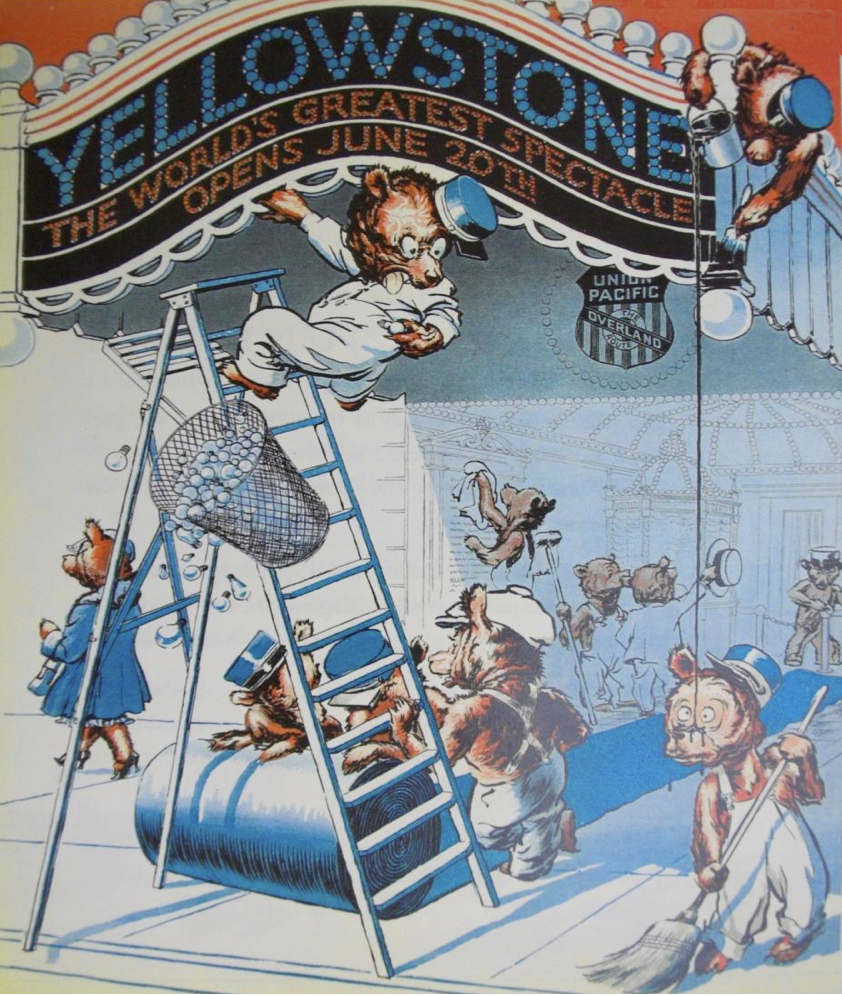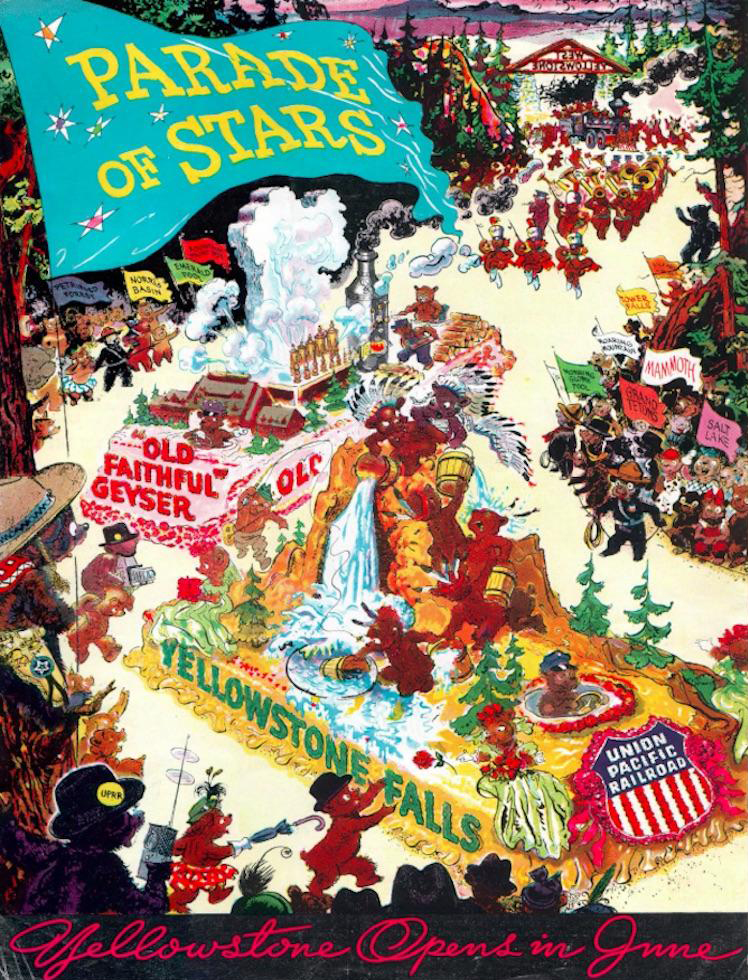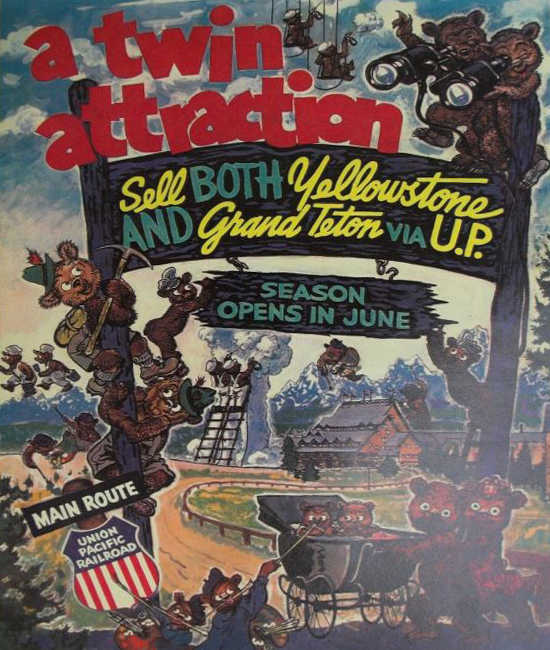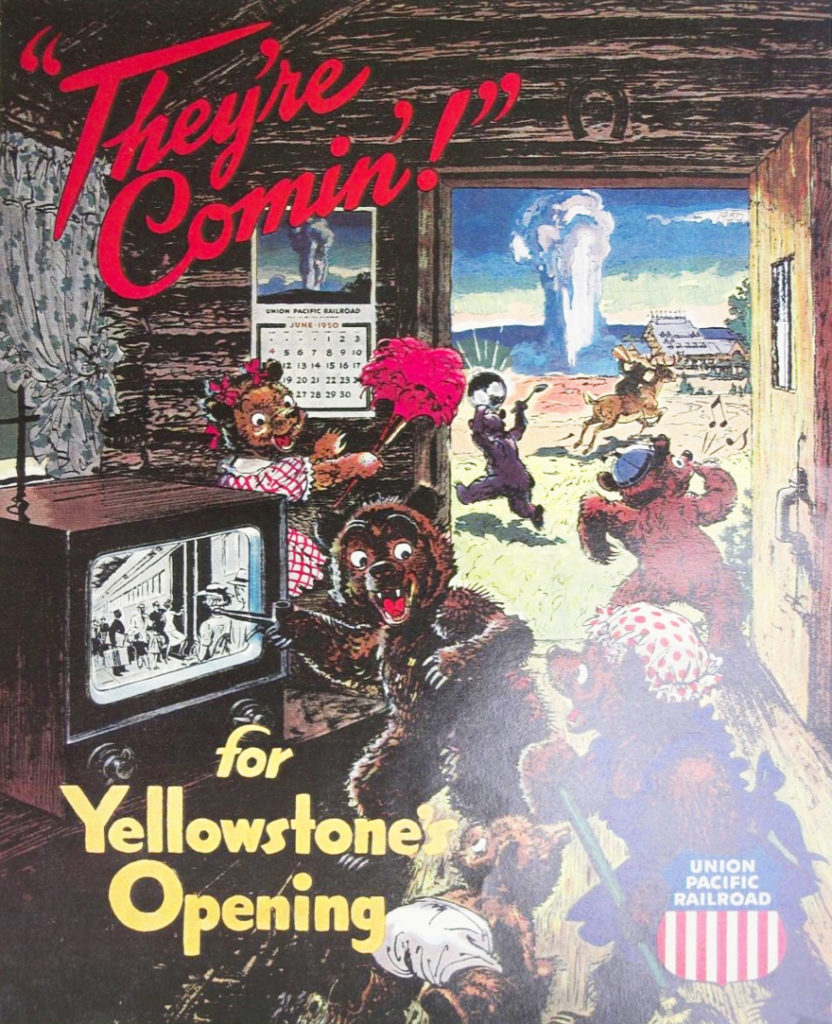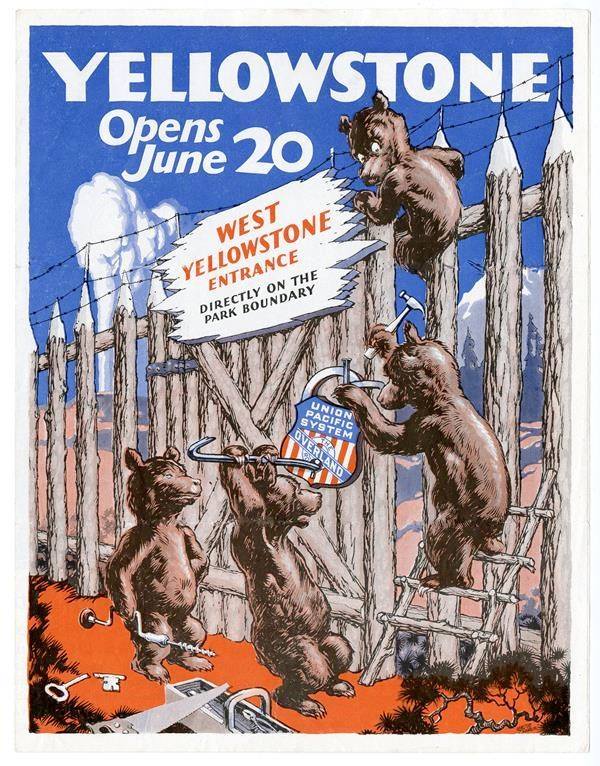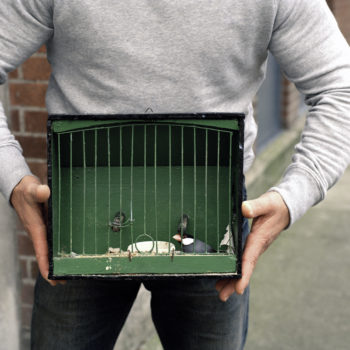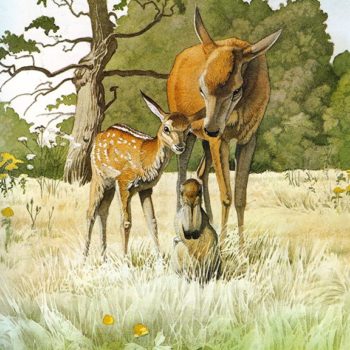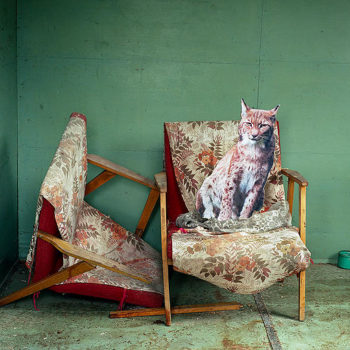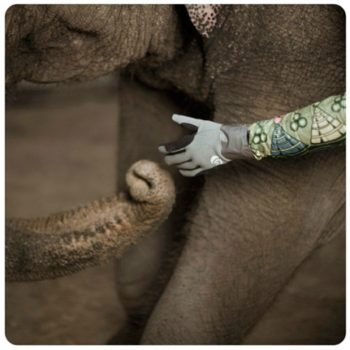Last fall, on my way home from the SPE NW conference in Grand Teton National Park, I stopped to eat in West Yellowstone, Montana. In the bathroom of the restaurant, I saw these charming framed artworks – advertising posters by Union Pacific showing a world full of cartoon bears instead of people. “Nature’s Greatest Exposition: Yellowstone” and “West’s Most Popular Ticket,” they read. They’re creations by Walter Oehrle, a commercial artist who was hired by the Union Pacific Railroad Company to illustrate the cover of a promotional piece announcing the opening of Yellowstone each June. “Beginning with the first brochure, in 1923, the subject was always bears. The four-page, letter-sized leaflet was then folded into a standard business envelope and mailed to travel agents. After the knockout cover, the two inside pages then specified how their clients might reach the park using the Union Pacific gateway at West Yellowstone. The back cover was generally the schedules or more information about other parks” (National Parks Traveler).
What I’ve gathered about Oehrle (pronounced “early”) is that he was born in 1892 in Omaha and he was largely self-taught. He worked for Disney, “for whom he had done cartoons of the mother of Ferdinand the Bull” (source), and he was the creator of the famous mascot and logo of the Borden Milk Company, “Elsie the Cow” (as well as her husband, Elmer, of Elmer’s Glue). He died in 1957.
For a short time, I kept a photo blog called Take Only Pictures; Leave Only Footprints, a collection of photos taken by/of tourists interacting with nature and animals in parks and like places. Looking through archive photos (many from Yellowstone), I was always stunned to see people so close to bears, feeding them from their vehicles and trying to take pictures as close to them as possible. I wanted to write something about these cute, silly cartoon bears acting as representative of the National Park, and park visitors, and Americans in general. How odd it is to look at these illustrations in 2019 – almost 60 years after Union Pacific’s bear campaign ended – when seeing a bear, from a great distance, in Yellowstone is a rarity or a treat. But I fell down a rabbit hole, and instead I just have to recommend this thesis paper by Montana State University student Ellen Rae Kress, “Wonder and Spectacle in the World’s First National Park: Railroad Imagery of Yellowstone National Park.”
A few of my favorite quotes:
“In the Union Pacific brochures, Yellowstone’s bears are anthropomorphized. They wear spectacles, smoke cigars, and engage in human activities like playing baseball, going to court, watching TV, having picnics, buy medicines online, making movies, and eating in cafes. They have nuclear families and wear clothing that signifies their gender roles. They become individuals with different personalities. In the absence of humans in the wilderness of the Park, bears seem to have become human replacements.”
“Like teddy bears, the Union Pacific bears are cute and are here to make humans happy. The most common theme in the Union Pacific bear illustrations is a theme of performance and entertainment. Of the 92 bear illustrations, 37 depict the bears being either mischievous or inept, like clowns. Twenty-two of the illustrations have a theme of performance; for example, films, circuses, parades, or beauty pageants. The bears are presented as happily performing for their human visitors.”
“A Union Pacific image from 1957 confirms the idea of Yellowstone as a spectacle. Bears are shown painting Yellowstone as if it were a stage set. Some bears paint clouds, others paint erupting geysers, and others paint mountains. In another 1924 brochure, two bears paint the walls of the Grand Canyon of the Yellowstone. Other images show the bears getting the Park ready for visitors by putting up signs, trimming tree branches, and stocking the lakes with fish. The brochures’ creators are aware that they are creating a spectacle to be consumed. The brochures frequently use words such as attraction, marvel, circus, sideshow, and spectacle.”
Posted October 30th, 2019

